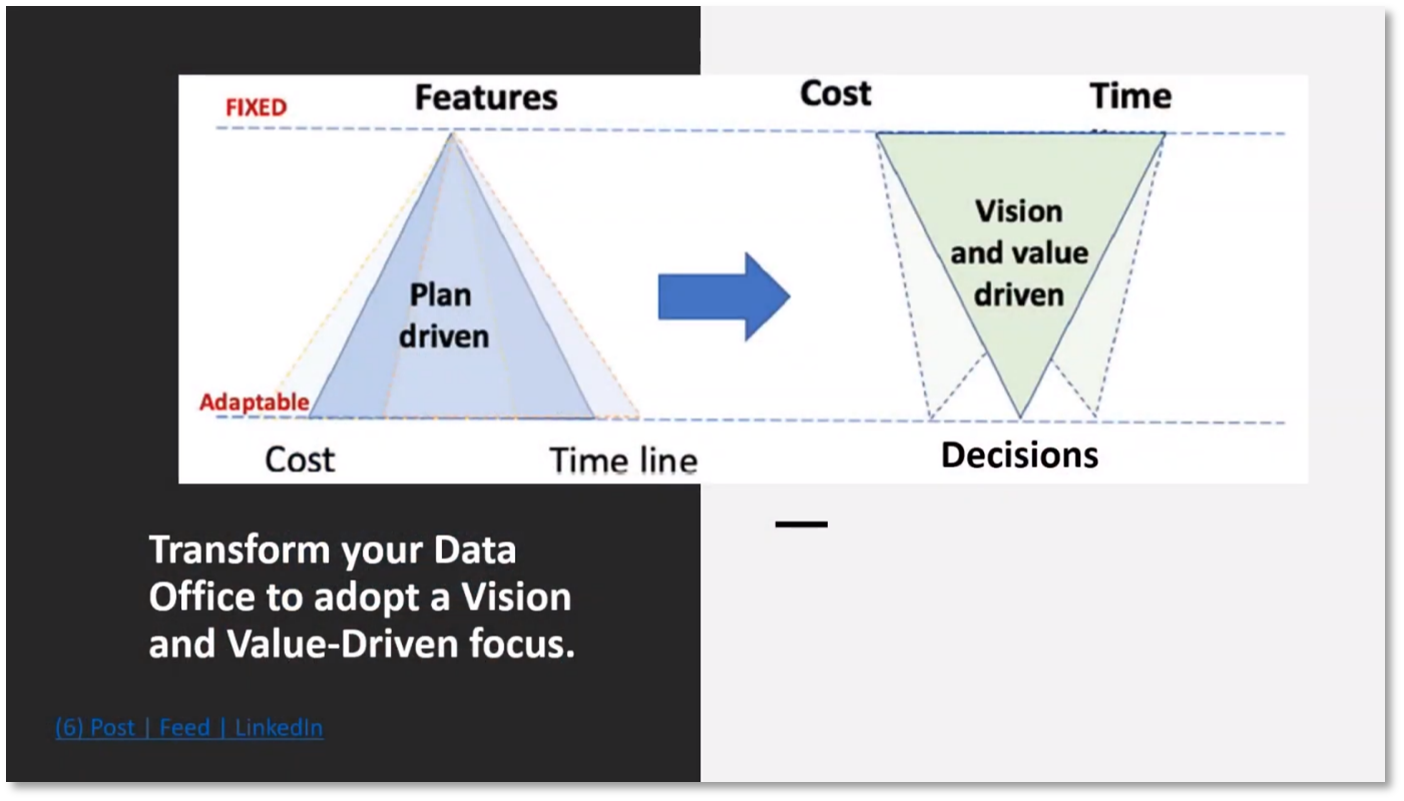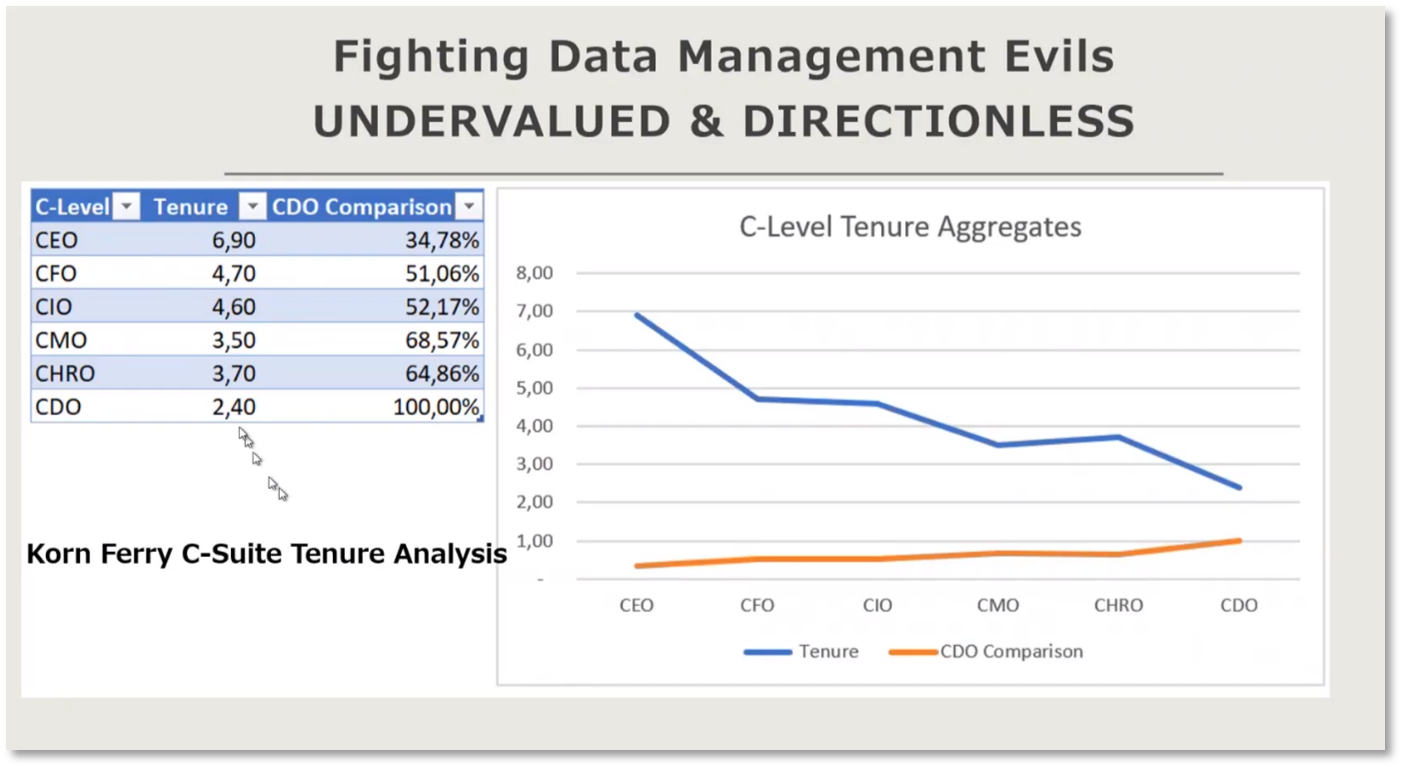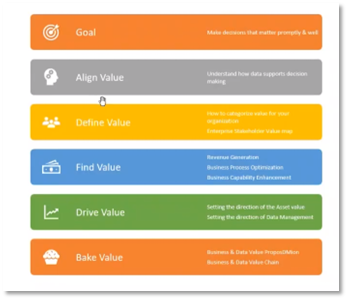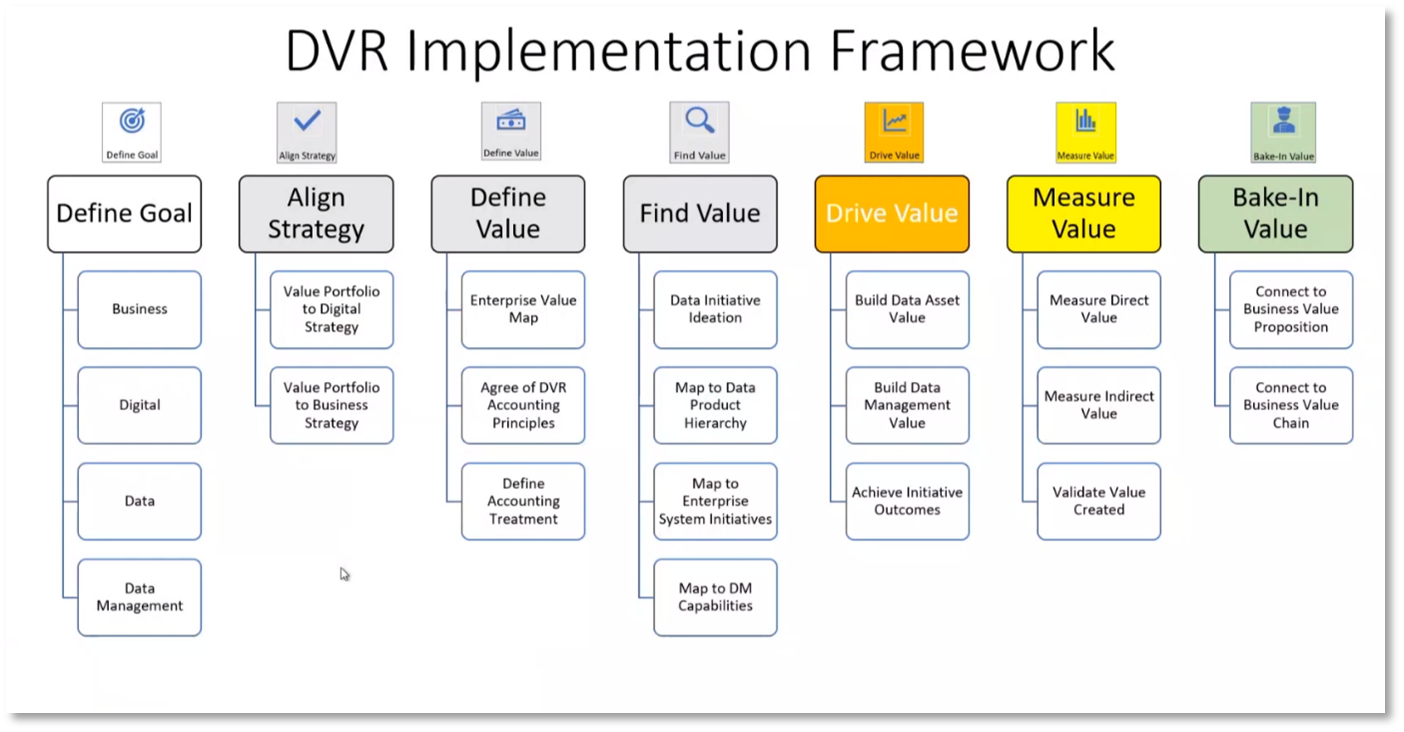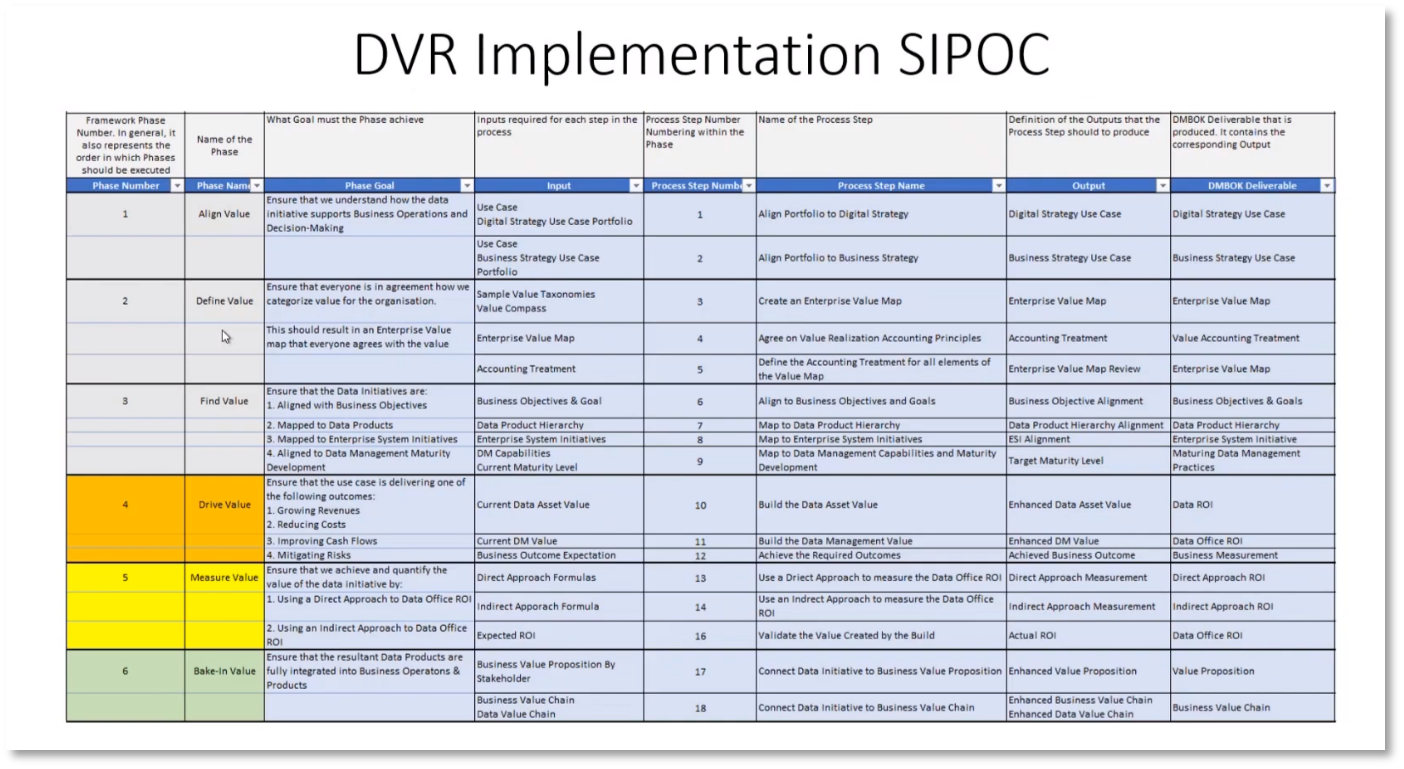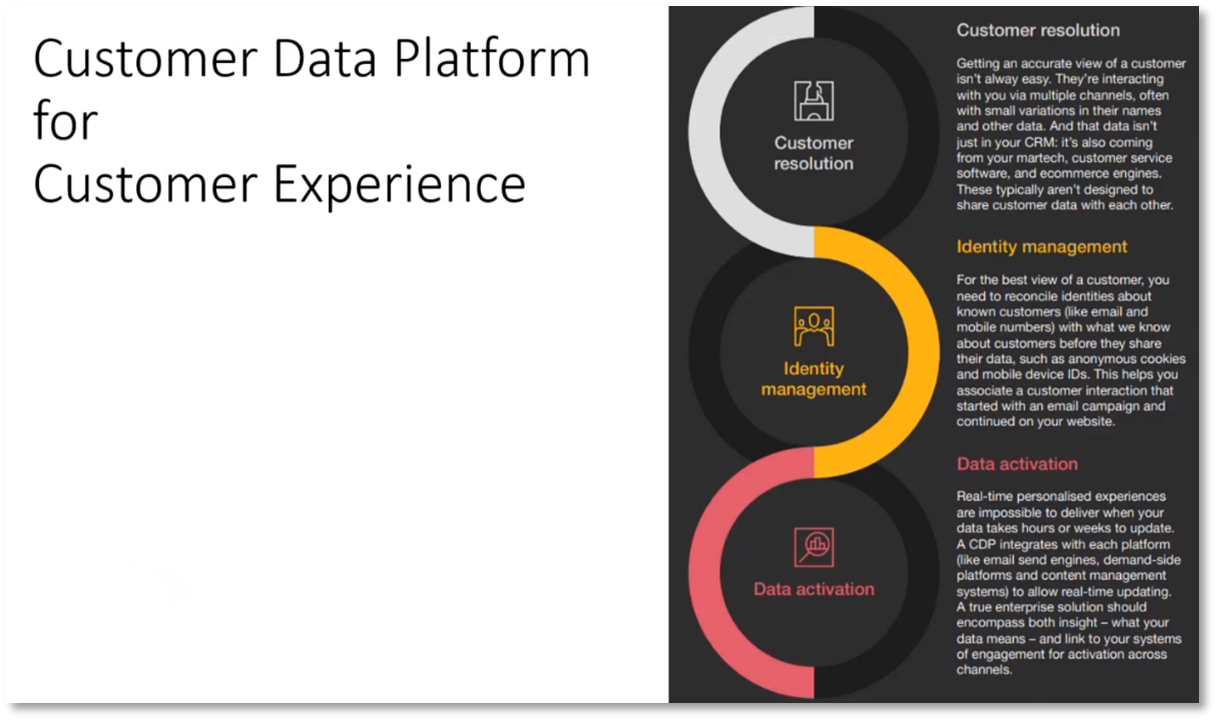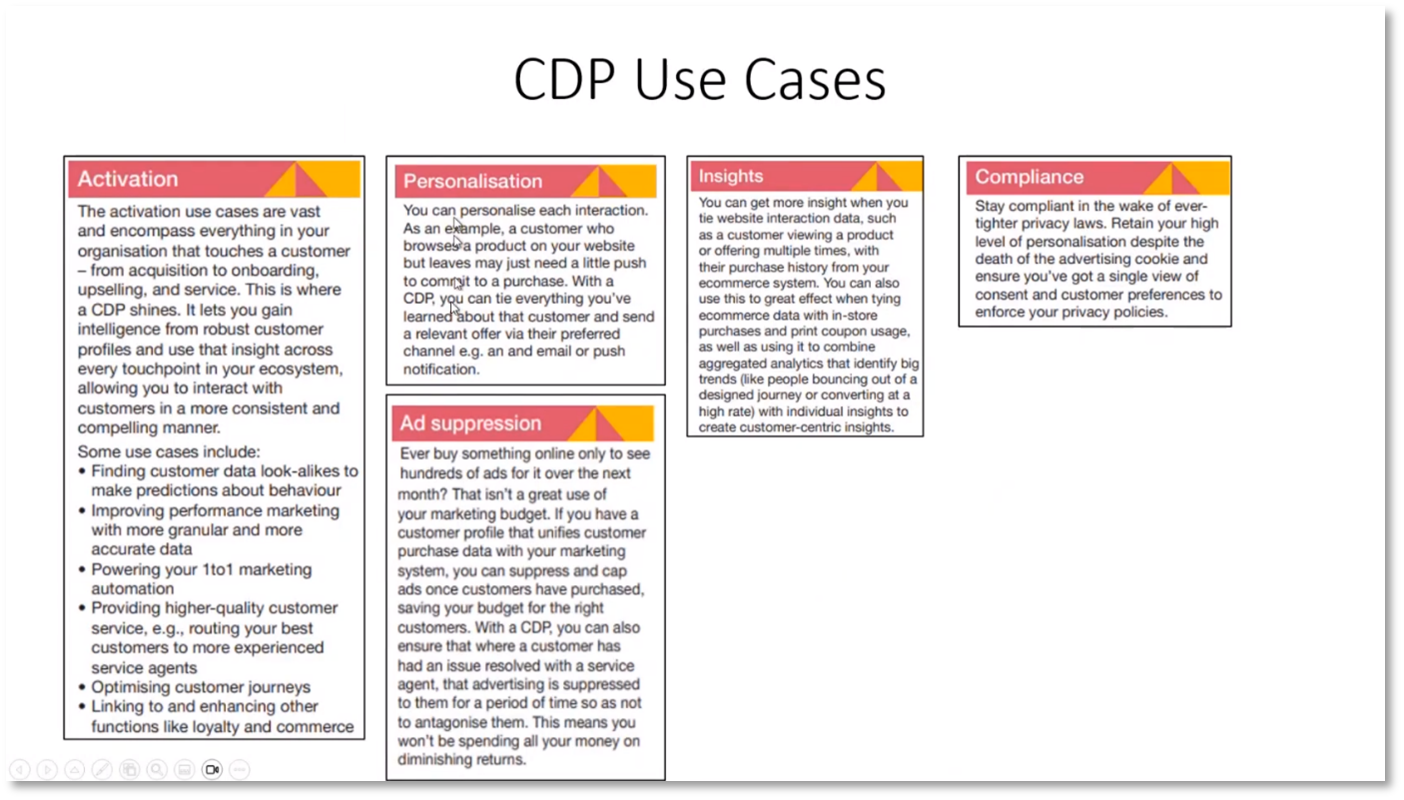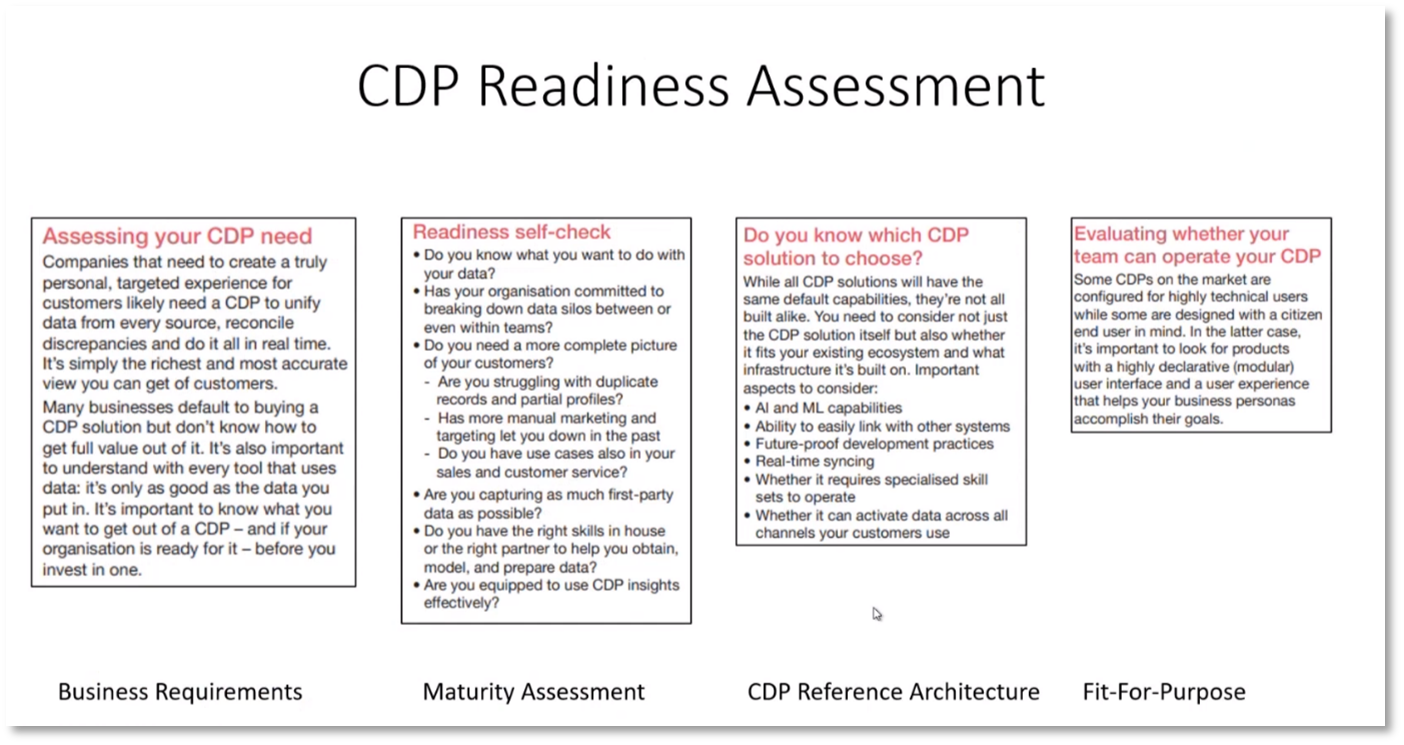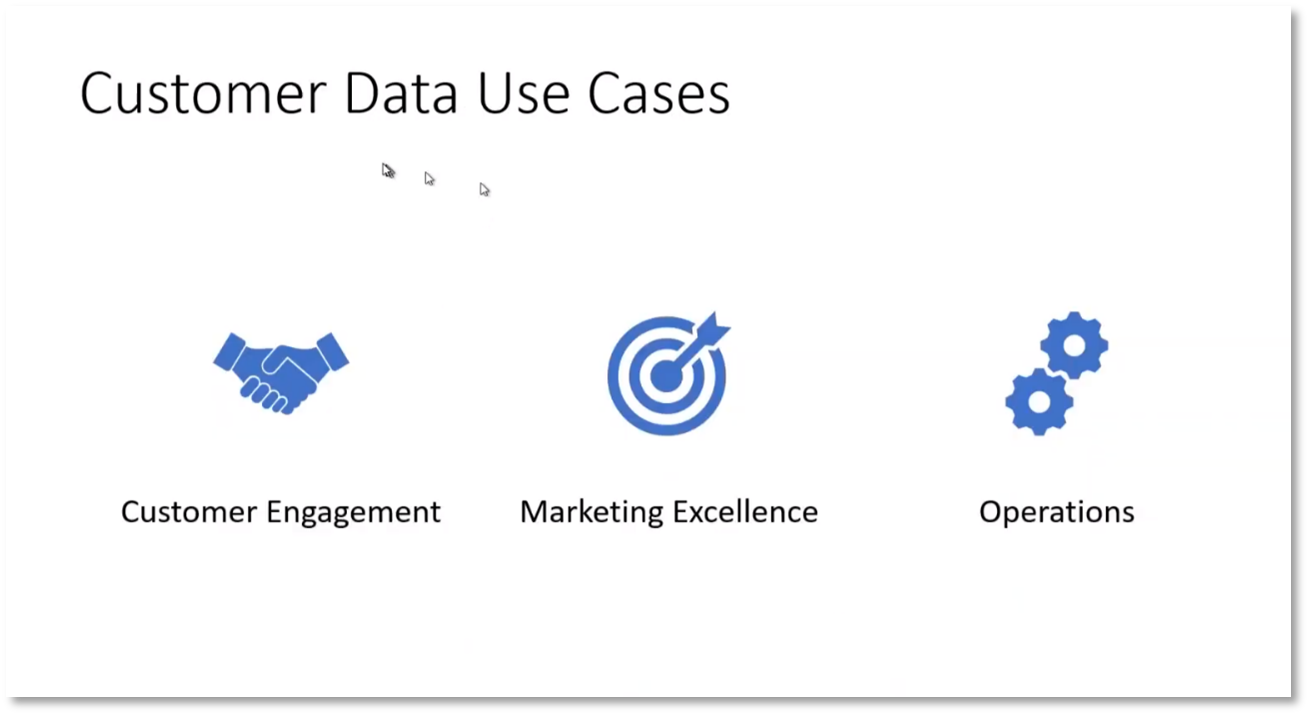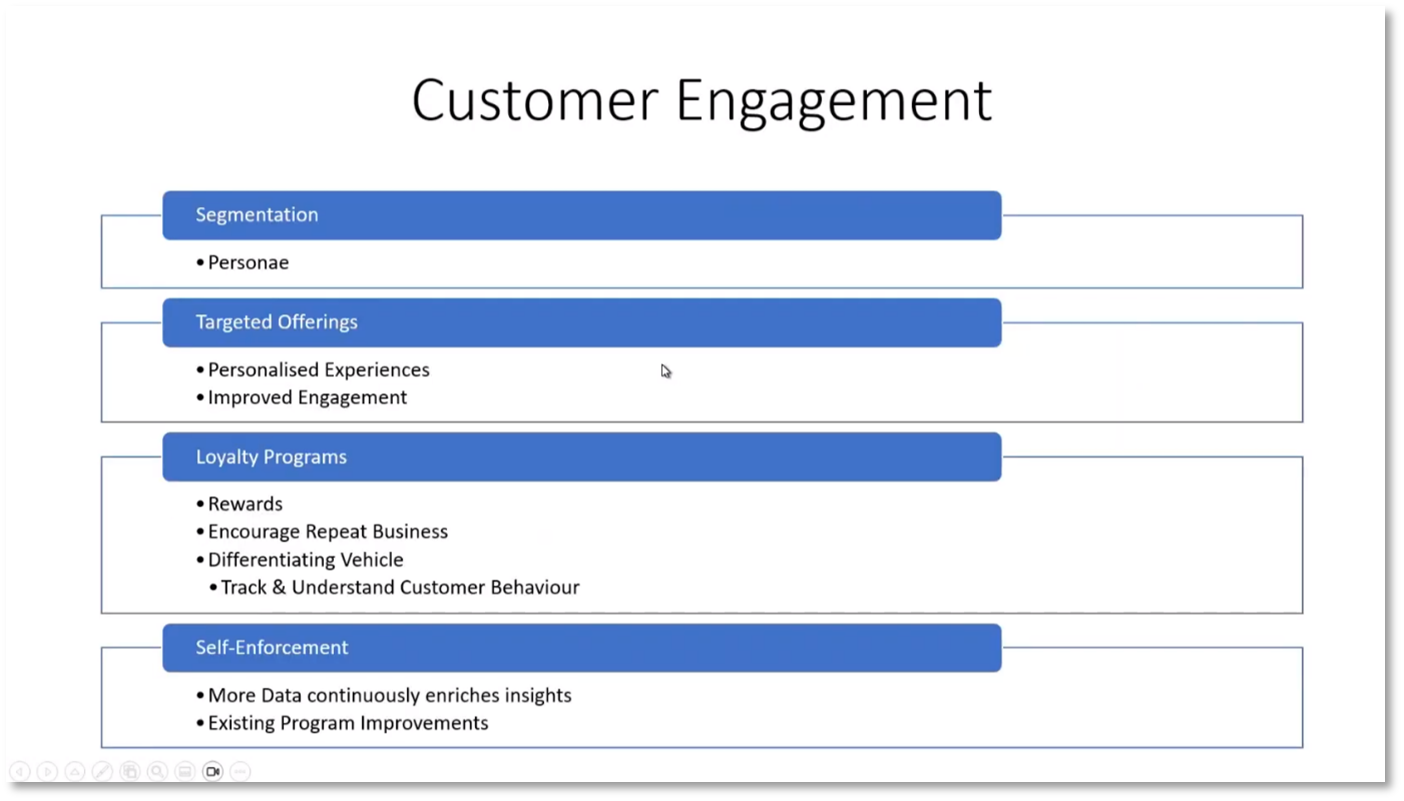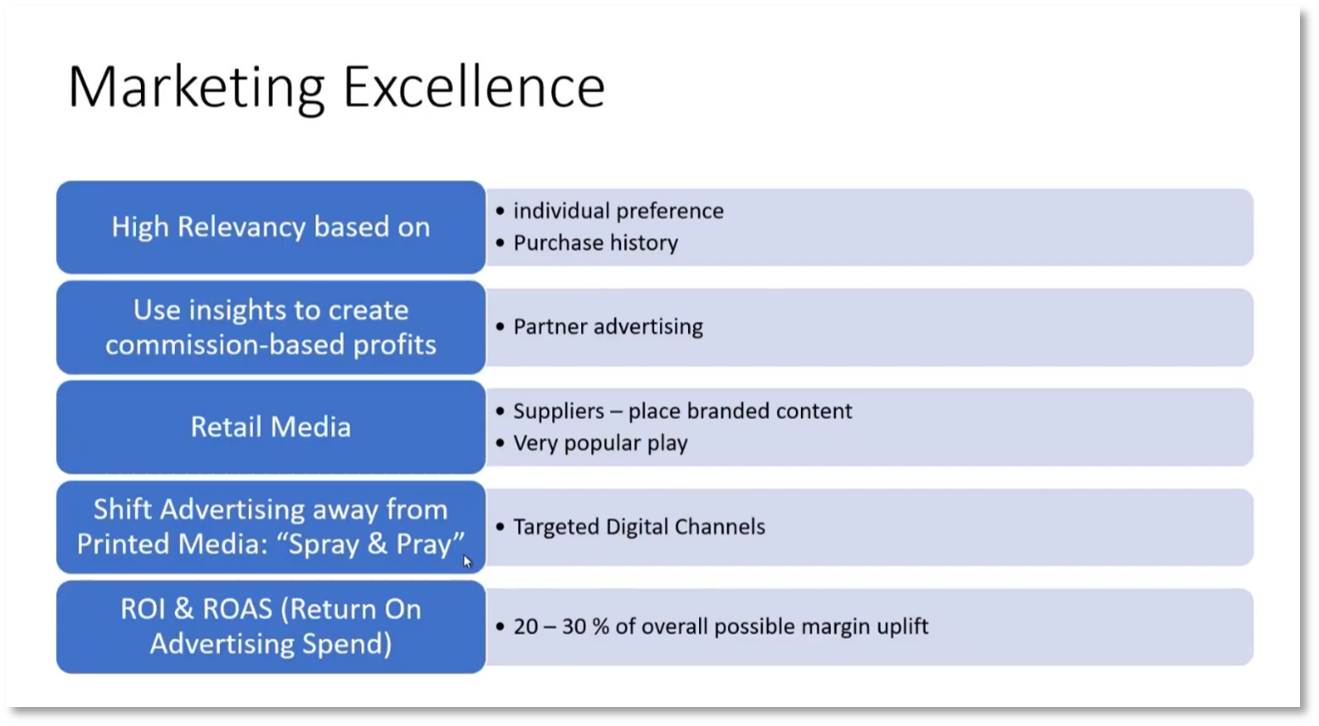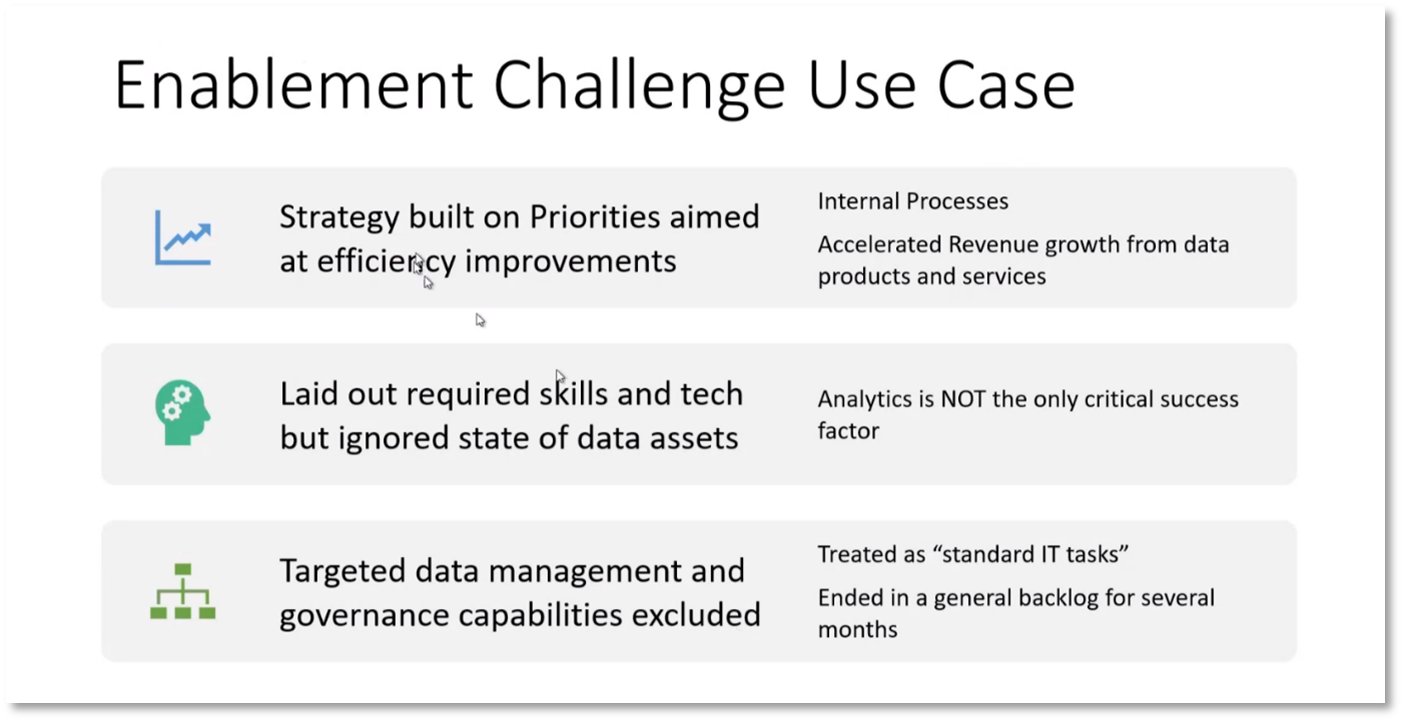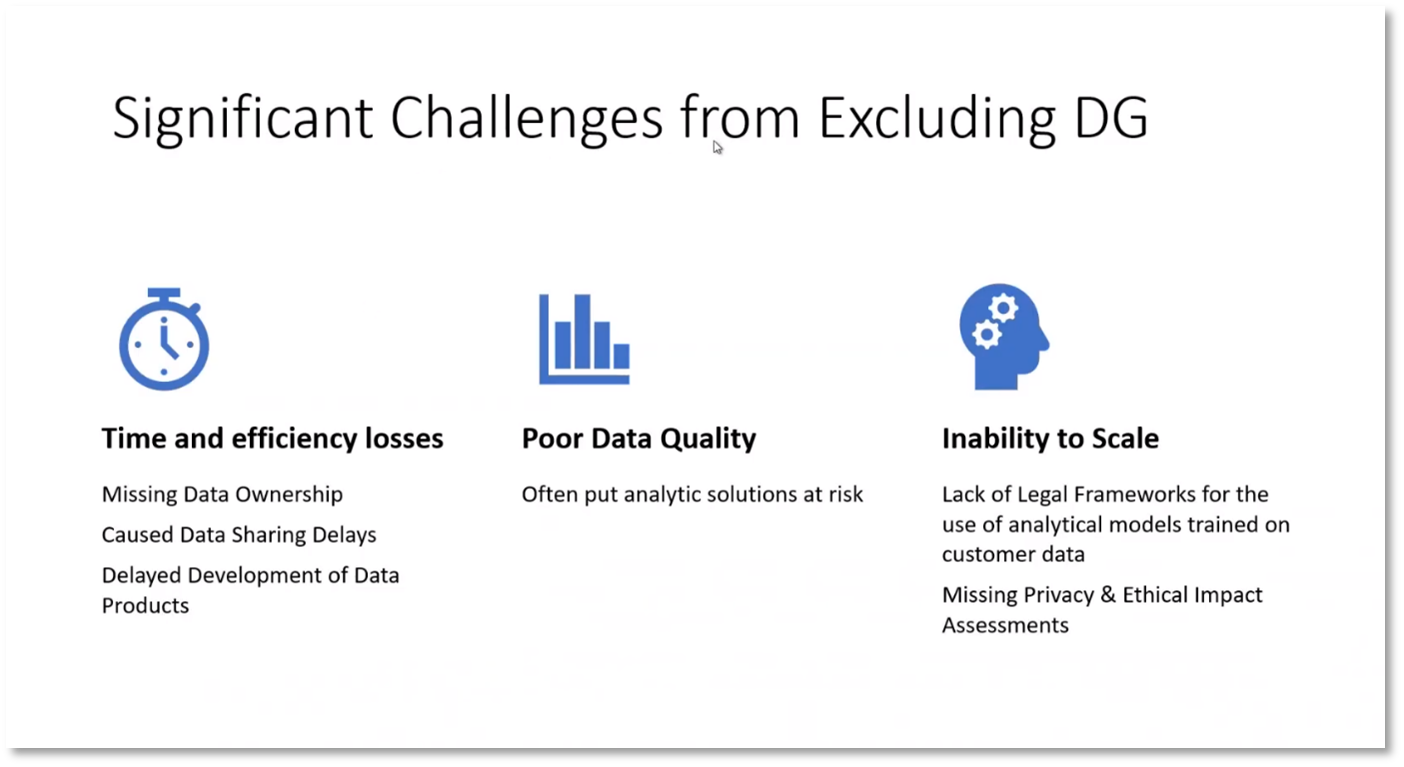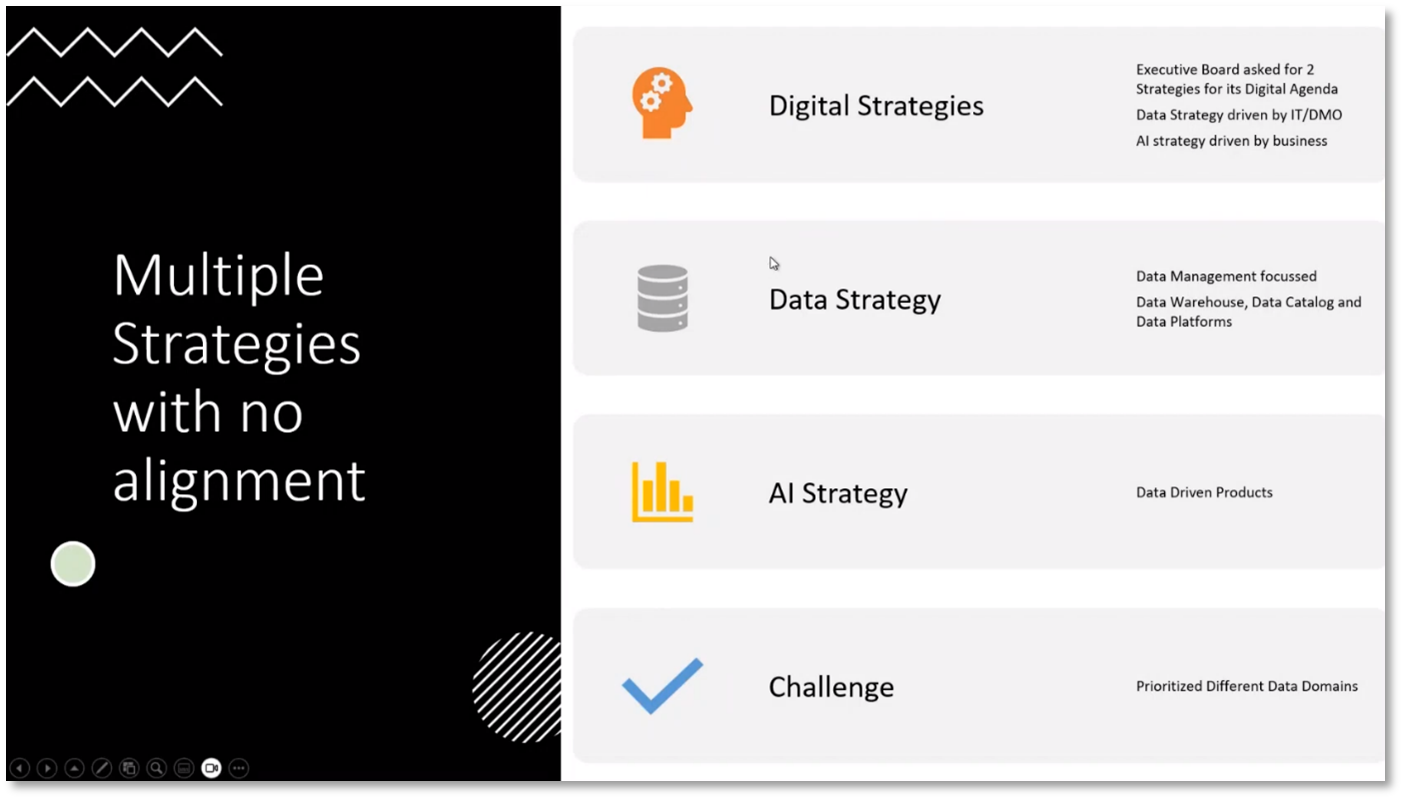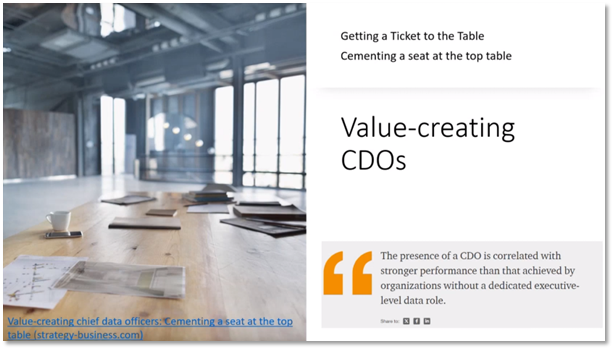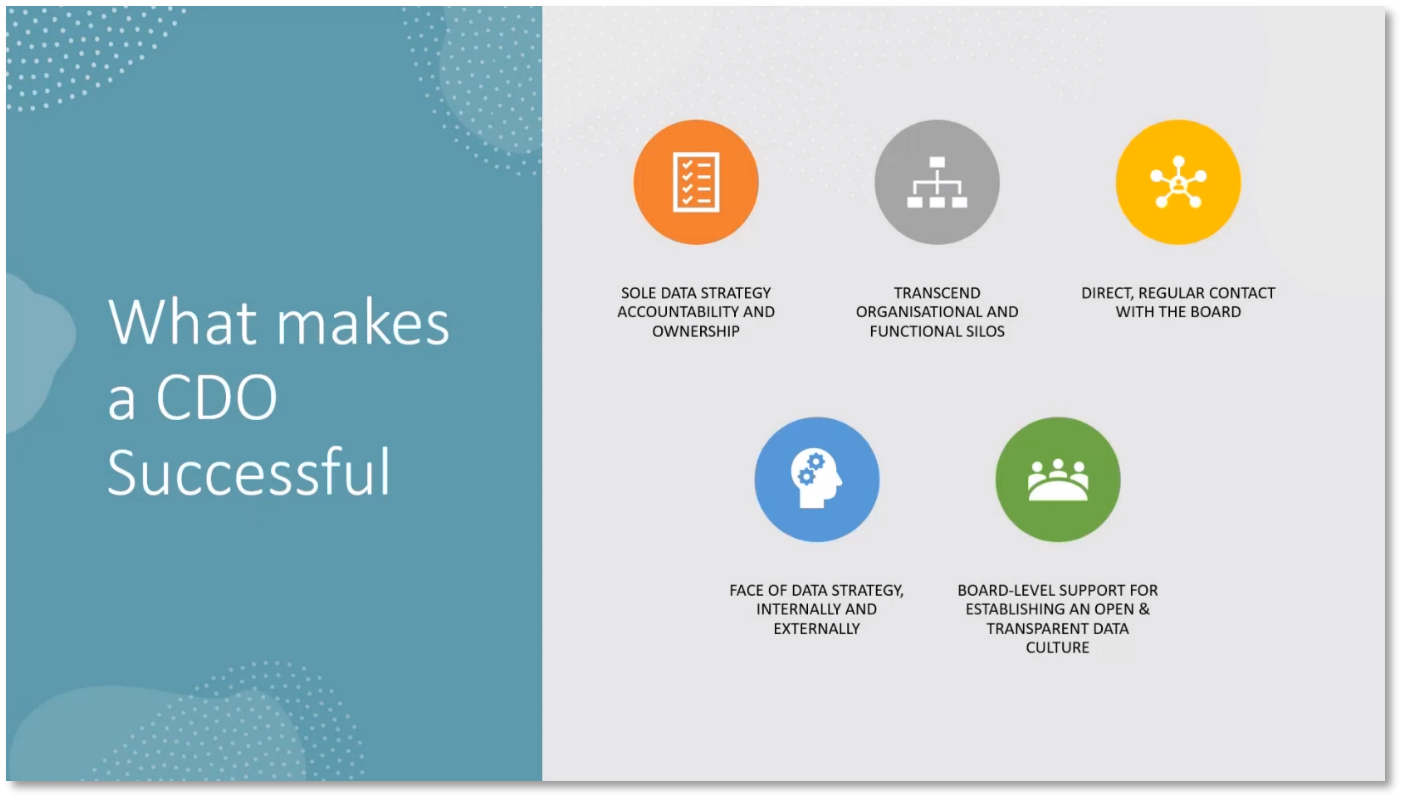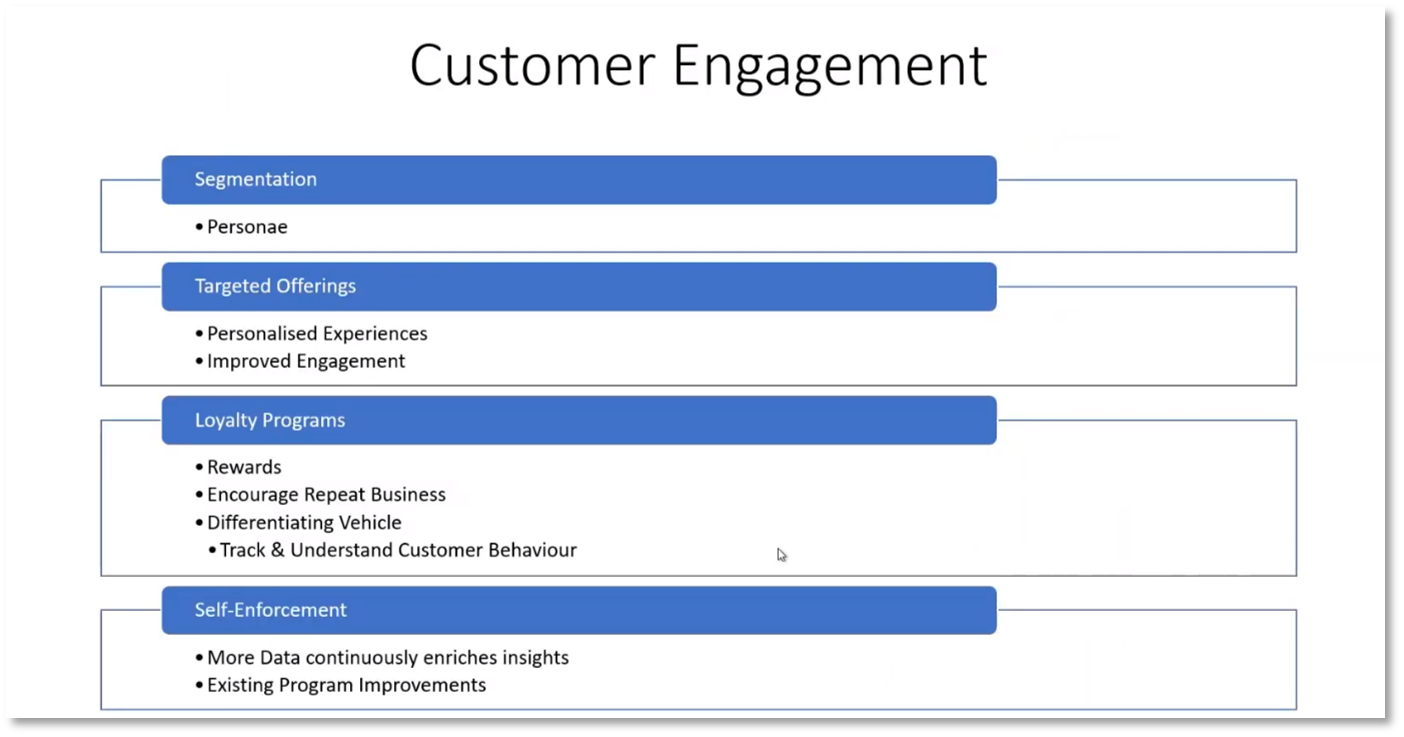Transform your Data Office to adopt a Vision and Value-Driven focus - Executives
Executive Summary
This webinar covers various topics related to Data Management, decision intelligence, and customer engagement in various industries. Howard Diesel discusses strategies for valuing data initiatives, data literacy, and the importance of customer data in retail and the telecommunication industry. The webinar covers the key responsibilities and challenges of a Chief Data Officer (CDO), building strong Data Management and strategic alignment, and defining Personae for business benefit.
Webinar Details:
Title: Transform your Data Office to adopt a Vision and Value-Driven focus - Executives
Date: 27 February 2024
Presenter: Howard Diesel
Meetup Group: Data Executives
Write-up Author: Howard Diesel
Contents
Executive Summary
Webinar Details
Improvement through DIY Course
Decision Intelligence and Dr Lauren Pratt
Data Office Transformation
Strategies for Valuing Data Initiatives
Data Management and Value Realization Process
Data Literacy and Business Value Proposition
Telco Industry and KPIs
Importance of Customer Data in Retail
Data Collection and Customer Data Platforms
Key Points on Professional Services and Identity Management
Key Use Cases for Customer Data Platform
Customer Engagement and Value Generation Mechanisms
Use Cases for Data Integration in Business
Enablement Challenges in Data Value Driven Business
Data Management and Governance Challenges
Building Strong Data Management and Strategic Alignment
The Role and Impact of the Chief Data Officer (CDO)
Key Responsibilities and Challenges of a Chief Data Officer (CDO)
CDO Conference and Regional CDO Trends
Defining Personae for Business Benefit
Personal and Professional Persona in Data Management
Improvement through DIY Course
Howard Diesel opens the webinar and shares about a student who initially failed their CDMP Data Management fundamentals exam despite self-study and being part of an academy cohort. However, after using the DIY course, the student passed the exam, scoring 85%. Another person, Paul, also benefited from the DIY course, scoring 89% after his first attempt at 79%, despite not following the full process. The DIY course has been praised for helping students reach the Master Level. The Master Level questions are noted to be tougher, and Howard shares that there are DIY quizzes available. The DG DQ quiz questions follow the same theme as the fundamentals. With 372 slides, the speaker is overwhelmed and unable to review them in detail.
Decision Intelligence and Dr. Lauren Pratt
The value-driven approach and its growing traction are highlighted. Due to new frameworks, monetisation and value in business practices are hot topics. The significant budget and tools spend related to evaluating business cases are a concern. Understanding the value in data architecture and business commitment is emphasised.
Dr. Lauren Pratt, a decision scientist, has developed a causal decision diagram to improve business decision-making and value. The speaker expresses interest in getting Dr. Pratt to do a presentation, which Connie offers to help set up. The speaker has applied decision intelligence concepts to their business, such as identifying levers for specialist exams and understanding the value proposition. Dr. Pratt's comment about making decisions based on data rather than gut feeling impresses the speaker.
Figure 1 Transform you Data Office to adopt a Vision and Value-Driven focus
Data Office Transformation
Howard highlights the importance of being vision and value-driven in supporting business decisions while mandating data office ROI. He also discusses the low tenure of CDOs and the focus on data office fundamentals and practical case studies, particularly in the retail environment. Additionally, he identifies common issues and "war stories" in Data Management programs and highlights the role of the CDO in creating value within the organisation. Finally, Howard introduces the DVD Way, a data value valuation framework that involves understanding business goals and aligning value with the business and its stakeholders.
Figure 2 Fighting Data Management Evils: UNDERVALUED and DIRECTIONLESS
Strategies for Valuing Data Initiatives
Defining and quantifying the value of data is essential for data initiatives. The Playbook details data valuation strategies, including defining the business goal, digital agenda, data strategy, and Data Management strategy. Direct and indirect approaches are important for finding data value, and carefully evaluating and quantifying data initiatives is crucial before building business cases and reporting ROI. Howard notes that bringing data analysis into existing products can benefit the business, but alignment and defining value are difficult, as they involve accounting treatment. Therefore, getting approval for data valuation from accountants and CFOs requires patience. Getting data valuation right before building business cases and reporting ROI is important.
Figure 3 DVR Implementation Framework
Figure 4 DVR Implementation Framework Details
Figure 5 DVR Implementation SIPOC
Data Management and Value Realization Process
Howard outlines aligning a portfolio to the digital and business strategy, creating an Enterprise Value map, understanding data product hierarchy, and conducting a technical feasibility study. He distinguishes between data ROI and data office ROI, highlighting the importance of generating value from Data Management. Howard also stresses the need to validate and measure ROI to build trust and demonstrate the value of data initiatives over time. He encourages businesses to consider data literacy ROI and determine data initiatives' economic benefit or value.
Data Literacy and Business Value Proposition
Organisations need to have agreements in place regarding data literacy. One indirect approach to improving data literacy and skills is connecting data initiatives to the business value proposition and value chain. Understanding and implementing the Supplier, Input, Process, Output and Consumers (SIPOC) framework in data strategy and literacy programs can help identify inputs, processes, and outputs in building data strategy. Additionally, utilising case studies to illustrate the implementation of data literacy in different industries can provide valuable insights.
Telco Industry and KPIs
Case studies are an excellent way to gain business literacy and understand the metrics for measuring operations. Telcos should focus on KPIs to ensure they are doing the right work. Cloud providers can benefit from banking case studies, insurance client retention, and government sector work. Government sector work requires adjustments in terminology since the citizen isn't a paying customer. Retailers who invest in customer data and use cases can expect a 3 to 5% increase in contribution margins after initial investments and data acquisition costs. Retail environment acquisition costs include marketing efforts to convince customers to provide details and point-of-sale devices to capture detailed information on stock items.
Figure 6 Telco Industry ROI Case Studies
Figure 7 Telco KPIs
Figure 8 Retail
Importance of Customer Data in Retail
Customer data is valuable for retail and service industries, providing insights into trends, consumer behaviour, and market analysis. Retail market analysis companies offer industry-level benchmarking data, but such data comes at a cost for businesses. Types of customer data include demographic, traffic, and behavioural data collected through loyalty and online trading programs. Still, privacy issues exist, especially when collecting demographic data that removes individual identifiers. Data collection areas include point of sale, customer service, and online platforms, each providing varying levels of customer behaviour information. Howard notes that the high ROI of customer data makes it crucial for retail and other industries, such as certification programs.
Figure 9 Common Types of Customer Data
Figure 10 Customer Data Platform for Customer Experience
Data Collection and Customer Data Platforms
Market research data provides insights into customer behaviour and market trends. Retailers receive reports from providers such as Nielsen on customer spending and pricing trends. Data collection through various channels, including digital platforms, is essential for gathering information on consumer behaviour. Integrating customer data from different platforms is crucial in creating a cohesive customer profile. Howard shares that the primary goal of the data platform is to improve the customer experience by resolving customer identities across different marketing channels, with the importance of customer resolution highlighted by examples such as creating an anti-money laundering customer mapping system.
Figure 11 CDP Benefits Summary
Key Points on Professional Services and Identity Management
In today's business world, being careful with anti-money laundering is crucial to avoid doing business with banned entities. Using customer data platforms can also provide personalised shopping experiences and improve customer trust. Trust-based, first-party data assets can lead to better analytics and future marketing strategies. With the push to avoid using cookies on websites, it's important to identify use cases and demonstrate the benefits of Data Management initiatives to the business.
Figure 12 CDP Use Cases
Key Use Cases for Customer Data Platform
A customer data platform is valuable for businesses seeking to interact with customers at every stage, from acquisition to onboarding, upselling, and service. It combines customer data from various sources, ensuring its accuracy and completeness, and uses it to create customer-centric insights. Marketing and advertising performance improves with one-to-one marketing automation, while quality customer service involves ad suppression, personalisation, and understanding customer preferences. Compliance with regulations like anti-money laundering and data privacy is essential, and a readiness assessment helps determine the need for a customer data platform, including assessing data commitment, technology reference architecture, and ensuring the platform is fit for purpose.
Figure 13 CDP Readiness Assessment
Figure 14 Customer Data Use Cases
Figure 15 Value Generation Mechanisms
Customer Engagement and Value Generation Mechanisms
Howard notes the three main use cases for businesses are customer engagement, marketing excellence, and operations. Customer engagement is centred around segmentation and loyalty programs, with personalised experiences, targeted offerings, and improved engagements being key factors. Loyalty programs encourage repeat business and provide insights into customer behaviour. Increased engagement can lead to cross-sell and upsell opportunities, new customers, and higher basket size. Companies like Walmart generate value by sharing anonymised data with their suppliers, who use insights to build a marketplace and improve products and services.
Figure 16 Customer Engagement
Figure 17 Associated Benefits
Figure 18 Other Value Generators
Use Cases for Data Integration in Business
Walmart's data integration strategy has yielded several successful use cases, such as Luminate, Marketing Excellence, partnering advertising, and retail media, resulting in more focused and effective advertising, personalised customer service, and a better return on advertising spend. The operations use case provides insights across the value chain, from procurement to personalised customer service. Executives need to be aware of the benefits and possibilities of data integration use cases in retail and professional services. Understanding the relationships between different customer data platforms and data integration is crucial for unlocking the potential of these applications.
Figure 19 Marketing Excellence
Figure 20 Operations
Enablement Challenges in Data Value Driven Business
When sending out messages, it's important to consider the key message to the customer for success. While business value is critical, focusing on Data Management and compliance is equally important. Pursuing commercial feasibility over technical feasibility can lead to pitfalls, and a lack of feasibility study for strategy can result in multiple strategies without considering the state of the data asset. It's important to note that analytics is not the only critical success factor, as bad or insufficient data can hinder analytics effectiveness.
Figure 21 War Stories
Figure 22 Pitfalls
Figure 23 Enablement Challenge Use Case
Data Management and Governance Challenges
Excluding targeted Data Management and governance capabilities can lead to technical debt, backlog, and challenges such as time and efficiency losses, lack of ownership and data sharing, delays in data product development, data quality concerns, lack of trust in forecasts, inability to scale, missing legal frameworks, and privacy and ethical impact assessments. Neglecting cost justification, clear data use case, and monetisation perspective during feasibility studies for strategy and transformation can have adverse effects. Multiple strategies without alignment can also lead to prioritisation and data domain conflicts.
Figure 24 Significant Challenges from Excluding DG
Figure 25 Feasibility Study for Strategy and Transformation
Figure 26 Multiple Strategies with no alignment
Building Strong Data Management and Strategic Alignment
A strong foundation of trustworthy and truthful Data Management capabilities is crucial to ensure effective analytics. Technical foundation building should align with business rationale and strategies, including digital data and cybersecurity, and must be synchronised and aligned with business objectives. Introducing a strategic alignment model maturity assessment is recommended to evaluate the alignment between different strategies. Additionally, organisations should identify an implementation framework for Data Management, align the data lifecycle strategy, establish a data-driven mindset across internal and external stakeholders, and recognise the crucial role of the Chief Data Officer in driving strategic alignment and Data Management.
Figure 27 Take-away
Figure 28 Building Sound Foundations
Figure 29 Value-creating CDOs
The Role and Impact of the Chief Data Officer (CDO)
Becoming part of setting the business strategy is crucial for integrating data into the business strategy. It is important to establish a place at the top executive level and have a Chief Data Officer (CDO) in an organisation. Global statistics show that the presence and impact of CDOs vary in different regions and industries. Factors driving the growth and success of a CDO include data strategy and accountability, digital transformation, and IT integration.
Figure 30 Proportion of global top companies with a CDO
Figure 31 What makes a CDO Successful
Key Responsibilities and Challenges of a Chief Data Officer (CDO)
Digital transformation requires a data strategy that goes beyond organisational and functional silos. CDOs should communicate vision and strategy with industry analysts and external stakeholders. Establishing broad-level support and an open and transparent data culture requires commitment from the board. The growth path within an organisation for a CDO involves facing challenges and obstacles related to data strategy and alignment. Additionally, Howard notes that a federated and replicated approach to data strategy may be necessary to demonstrate value over time. Regular contact with the board is crucial for the CDO to present and face data strategy internally and externally. However, some companies, particularly those in industries such as insurance and banking, may view the need for a CDO as solely regulatory or obligatory.
CDO Conference and Regional CDO Trends
Howard highlights the importance of recognising the value of a Chief Data Officer (CDO) in an organisation, especially in the Middle Eastern and African regions where CDO roles are growing. Considering the number of CDOs and their interest in such events, the question of whether it is worth setting up CDO conferences in these regions is raised. On the other hand, the reduction in CDO presence in Latin America, South America, and the Asian Pacific region is observed, prompting the need to gather feedback and comments from regularly attending individuals and new customers to understand regional CDO trends. The plan to reach out to Marita, a participant from South America, and other relevant individuals for feedback and insights on regional CDO trends is also mentioned.
Defining Personae for Business Benefit
During a discussion about Data Management, Paul raises a question about defining Personae and their connection to the value proposition. The goal was to uplift data maturity and reach a global or South African audience, with success measured by metrics such as listening hours on Spotify. The group discusses which groups or types of individuals would benefit from Data Management and the products delivered to them, including citizens, executives, managers, and specialists/professionals. The focus is on defining Personae based on the specific groups deriving value for the business.
Figure 32 Customer Engagement
Personal and Professional Personae in Data Management
In the realm of Data Management, each leadership level has a unique focus. Professionals are driven by building their careers and becoming the best data professionals possible, while executives prioritise data literacy and competence across the organisation. Executives are less interested in certifications and more focused on their team's ability to deliver quality work. Data managers must ensure their team is skilled and focused on delivering data quality. Chief Data Officers require highly skilled individuals to execute data initiatives and achieve success rather than focusing on certification.
If you want to receive the recording, kindly contact Debbie (social@modelwaresystems.com)
Don’t forget to join our exciting LinkedIn and Meetup data communities not to miss out!


